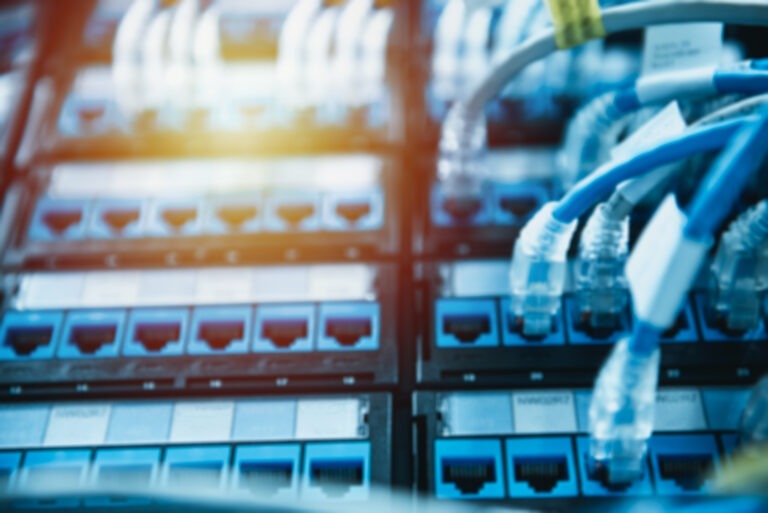The number of devices capable of measuring Power Quality parameters has increased vastly in recent years. As a result, enormous amounts of data are available continuously. Data (‘real time’ as well as logged) can be combined with advanced analysis techniques to make energy systems much more efficient, resilient and robust.

How can monitoring and measurement data be used in the best way to improve Power Quality and optimize electrical systems’ performance and reliability?
A data-driven approach provides network operators and installation managers with valuable insights into the operation of electrical grids, potential voltage and current quality issues, and measures to improve reliability and efficiency. Data from sensors and smart meters installed in vital equipment, such as transformers and capacitors, can help monitor system health and performance. Based on historical data, power quality patterns and trends can be identified. This enables taking proactive measures to prevent problems or minimize their impact.
1. Real-time monitoring networks and equipment
Using ‘real time’ data, Power Quality parameters can be examined, and problems detected at an early stage. In this way, ‘downtime’ is minimized. It’s even possible to prevent catastrophic failures. By continuously monitoring voltage, current, frequency, and power factor, for example, deviations can be identified rapidly, and measures taken before deviations escalate into serious problems. Advanced analytics and machine learning algorithms can accurately pinpoint faults using data from smart grid devices. This reduces downtime and ensures faster power recovery after outages.
2. Mitigation and management of PQ-parameters
Data analysis can identify sources of harmonics (unwanted frequencies that distort voltage and current waveforms) and support the design of harmonic filters and development of strategies to reduce impact on the energy system. Data-driven systems can optimize voltage regulation by dynamically adjusting voltage levels to demand and load. Data analysis also supports load profiling and forecasting – to understand consumption patterns, loads can be optimally balanced, minimizing voltage fluctuations and reducing the likelihood of Power Quality issues. Analysis also helps to identify sources of flicker (rapid voltage variations caused by widely varying loads) and implement measures to stabilize voltage and reduce flicker effects.
3. Improved integration of renewable resources
Renewable energy sources provide power intermittently, creating new Power Quality challenges. Data analysis can optimize integration of renewable energy sources into the grid by accurately forecasting these fluctuations. That allows better grid management, as well as smooth switching between different energy sources.
Clear picture
It is difficult to get a clear picture if no distinction is made between temporary issues and persistent Power Quality problems. Power Quality issues often involve multiple parameters that all need to be measured simultaneously. However, synchronizing data from different sensors and measuring devices can be challenging, with timing differences leading to inaccurate analyses.
When analyzing the vast amounts of data collected by permanently installed PQ measuring equipment, algorithms capable of detecting anomalies are essential. By distinguishing between ‘normal’ and ‘abnormal’ variations, for example by applying advanced statistical techniques, it is possible to find patterns without guesswork. That saves a considerable amount of work and time.
Improving Power Quality and network performance by leveraging data is a complex task that requires specialized knowledge. Verification and analysis of data is step one – next, the most appropriate solutions need to be identified. Analyzing vast amounts of data requires advanced data processing techniques, and ensuring data interoperability and compatibility. After all, power quality data can come from a variety of sources, such as smart meters, sensors, and monitoring devices from different manufacturers, each working with a proprietary data format.
Optimizing Power Quality requires real-time monitoring, timely processing and interpretation of measurement data, and immediate response. This, in turn, demands advanced technologies, expertise in the field of data analysis, and close cooperation between the parties involved! Analyzing Power Quality measurement data, distinguishing essential and secondary issues, and translating analyses into practical improvement steps can only be done with specialized expertise in electrical systems and data processing.
Continuous research and new monitoring systems and analysis methods are essential to overcoming the aforementioned challenges and continuously optimizing Power Quality. It is also important to ensure measurement equipment is connected correctly and that all meters are synchronized. You need to know exactly what is being measured and then data needs to be interpreted correctly. What’s more, it’s also important to determine what you won’t be measuring — and what impact that will have!